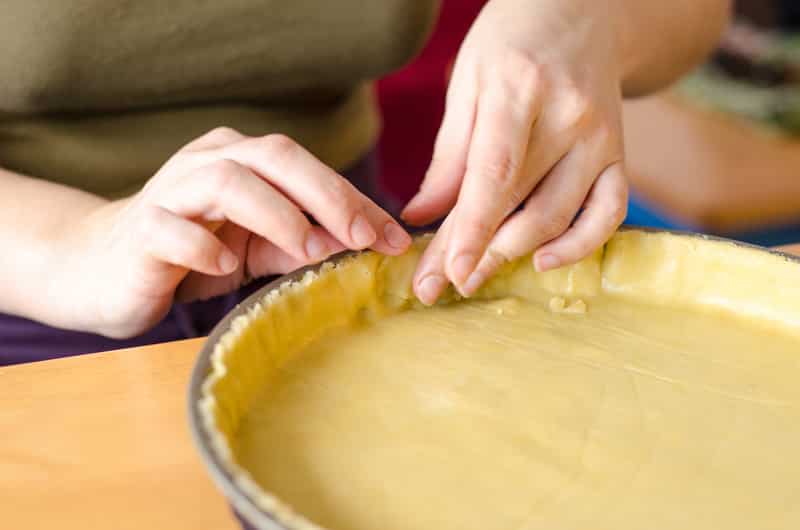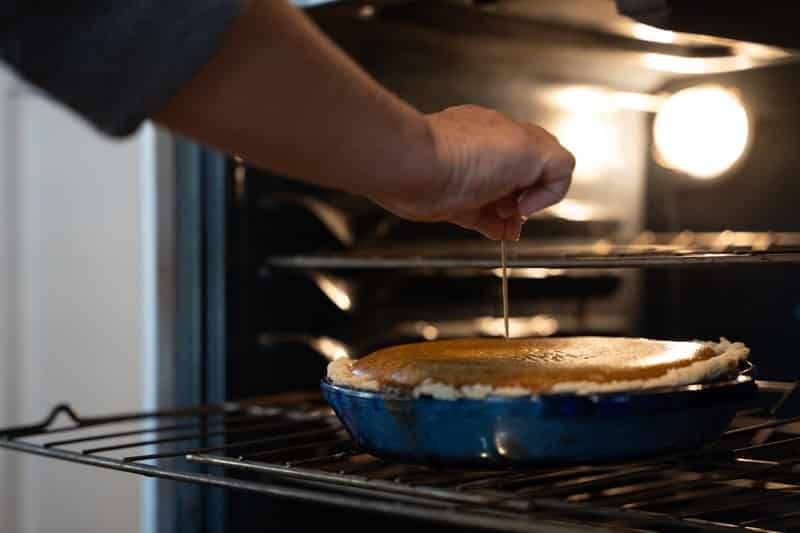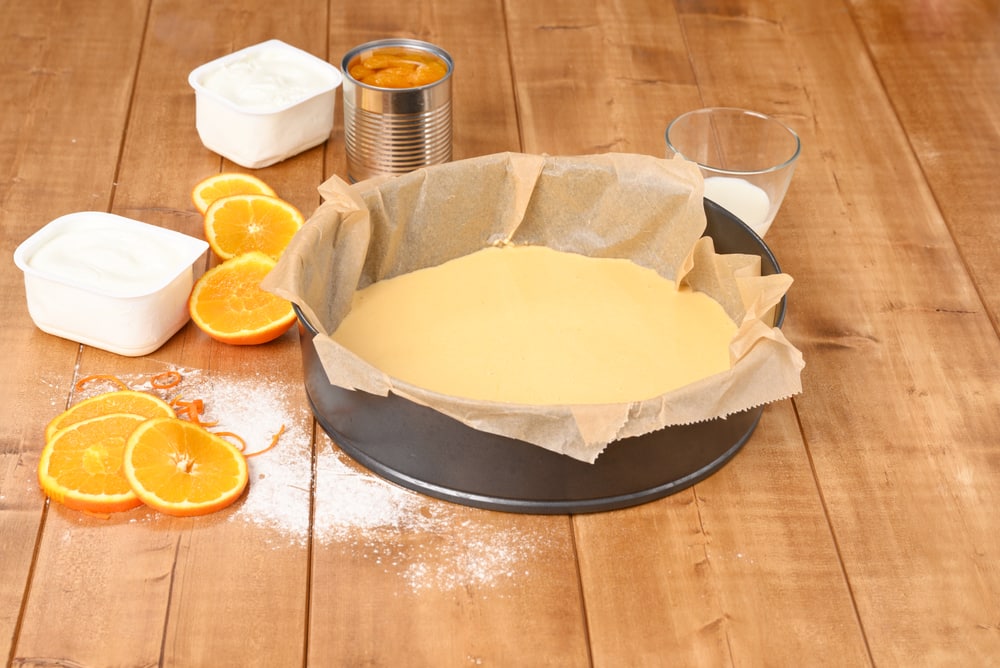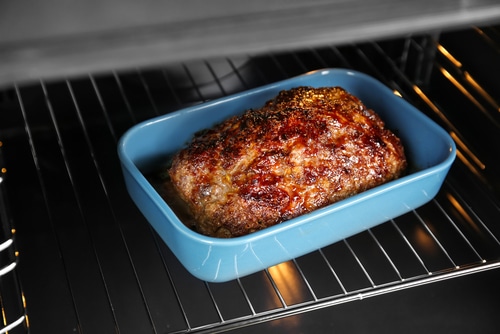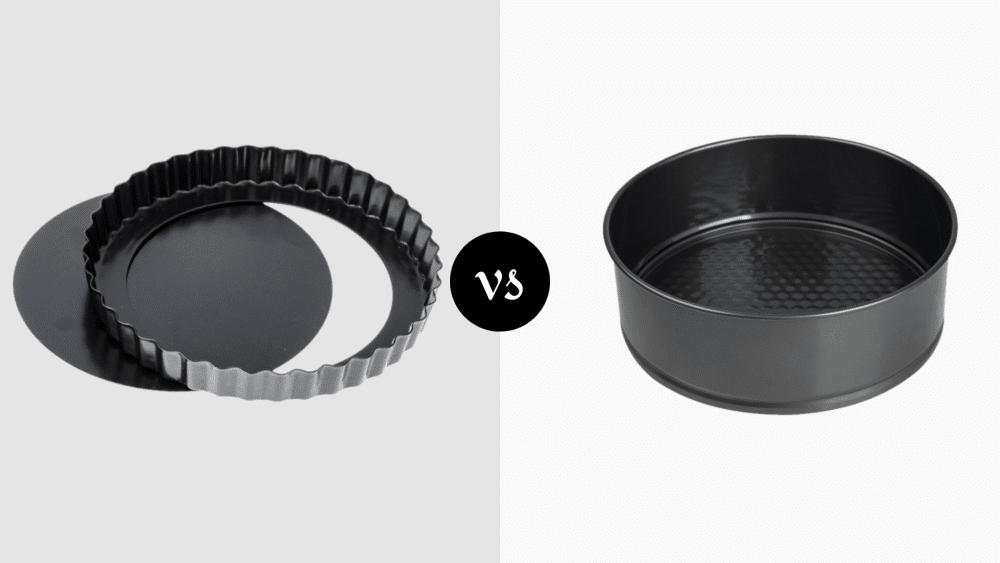
Baking is one of the most enjoyable forms of cooking, but you have to choose the right pans. This is because baking pans are available in different shapes and materials, which directly impacts the texture of the food.
However, beginners have a hard time differentiating between different types of baking pans, which is why we are sharing the differences between a cake pan and a pie pan!
Pie Pan vs. Cake Pan Comparison Table
| Features | Pie Pan | Cake Pan |
| Sides | Sloped | Straight |
| Depth | Shallow | Deep |
| Materials | Glass, ceramic, aluminum, pyrex, stainless steel, and ceramic | Tinned steel, silicone, stainless steel, stone, and glass |
Pie Pan vs. Cake Pan
1. Pie Pan
A pie pan is also known as a pie tin or pie plate. The pan has thin and slanted sides, which are usually 1.5 inches deep. The pie pans are available in different sizes, including eight inches, nine inches, and ten inches.
In addition, the pie pans are made from different materials, including tinned steel, ceramic, stoneware, glass, and aluminum. The pie pans are suitable for baking single-crust and double-crust pies.
Some pans are also designed with distorted edges, which range from nine to twelve inches. These pans are recommended for preparing sweet and savory pies.
Design
The pie pans are available in glass, ceramic, aluminum, pyrex, stainless steel, ceramic, and more. However, if you want to bake in a pie pan, you can use aluminum, stainless steel, or cast iron pans.
The aluminum pans are designed with a non-stick surface, which promises evenly cooked food. On the other hand, stainless steel pie pans are designed with handles and offer a robust cooking surface.
The cast iron pie pans are recommended for commercial use because they heat up evenly. These pans are available in different shapes, including square, rectangle, oval, and round.
They have handles on the pan’s bottom side, making them easier to handle. The pans are extremely convenient to maintain and are available at an affordable price. The rim design of the pan makes sure the pie’s edge is crusty.
Performance
The pie pans are shallow and have sloped sides, which makes it easier to cook the pies evenly. In addition, the edges are flat or fluted to hold the crust.
Some pie pans are designed with removable bottoms, while some are one-piece pans. They are extremely easy to use, given the lightweight design. However, the oven-safe temperature is limited, so you don’t need to worry about damage or cracks.
The pie pans are dishwasher-safe, making them easier to clean. The pie pans are recommended for preparing apple pies, custard pies, banana pies, and peach pies.
However, you can also prepare savory pies, including nacho pie, chicken pot pie, crab pie, fish, and meatloaf. The thin material of the pans ensures that the food is cooked from the bottom and all sides, hence evenly-cooked food.
2. Cake Pan
A cake pan is available in various sizes and shapes, such as rectangular, square, and round. However, the 9 x 13 inches rectangle cake pans are most commonly used because they are suitable for baking cakes as well as savory recipes like lasagna.
On the other hand, round cake pans can be used for making layer cakes, and the diameter ranges from eight to nine inches. These cake pans usually have a depth of 1.5 inches.
Design
The cake pans are usually made from tinned steel, silicone, stainless steel, stone, and glass. In addition, heavy-gauge aluminum material is the most common.
The cake pans are stick and scratch-resistant, while the aluminum and steel pans are designed with a non-stick coating, which promises the easier release of food.
The pans are designed with rolled lips and higher sides, which helps achieve straight borders of the food. Also, rust-resistant material is used to make the cake pans and can withstand long-term use.
The pans can reach the set temperature pretty quickly. The square-rolled edges of the pan promise a strong structure, so it won’t warp.
Performance
In most cases, the cake pans are designed with a non-stick surface for easier release of the food items. In addition to cakes, the cake pans are recommended for preparing layered party dips, casseroles, and meatloaf.
The metal can endure high temperatures during baking. Also, the cake pans can simmer pretty quickly once it’s removed from the oven.
The cake pans make sure the crust remains smooth and delicate, and the edges make it easier to stack and ice. Some cake pans have a micro-textured design, which promises even baking outcomes. In addition, they can be used to prepare tarts, rolls, brownies, and more.
The Final Verdict
Both cake pans and pie pans are suitable for baking. The pie pans are recommended if you want something with shallow edges, while cake pans are recommended if you want a deep pan.
Other than the depth, there are no differences in the pans because they are available in various materials, sizes, and shapes.
